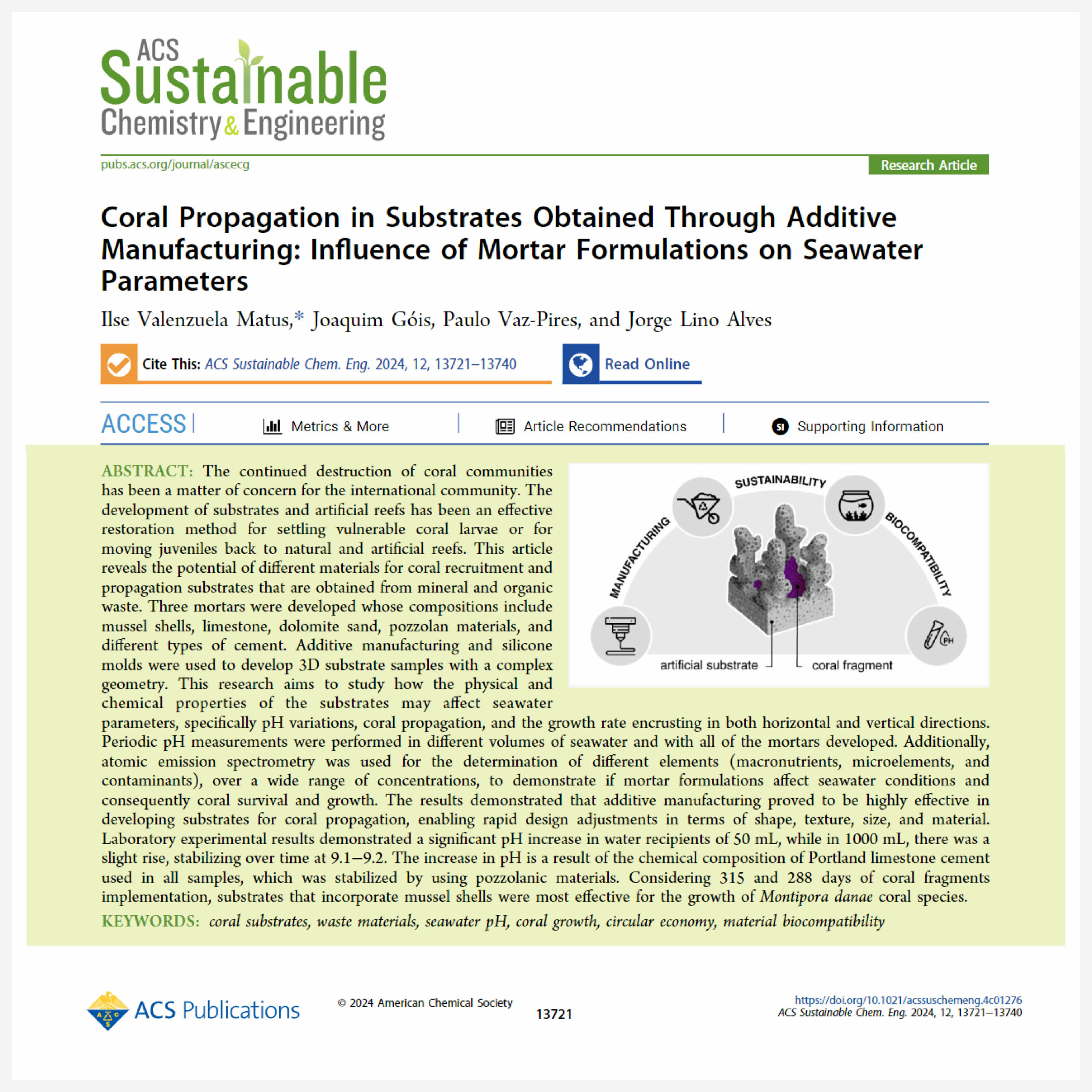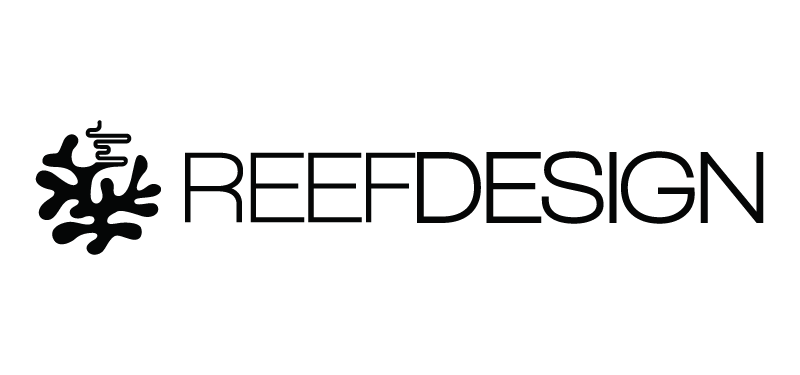ACS Sustainable Chemistry & Engineering – Research Paper 2024

Category
White PapersAbout This Project
The continued destruction of coral communities has been a matter of concern for the international community. The development of substrates and artificial reefs has been an effective restoration method for settling vulnerable coral larvae or for moving juveniles back to natural and artificial reefs. This article reveals the potential of different materials for coral recruitment and propagation substrates that are obtained from mineral and organic waste. Three mortars were developed whose compositions include mussel shells, limestone, dolomite sand, pozzolan materials, and different types of cement. Additive manufacturing and silicone molds were used to develop 3D substrate samples with a complex geometry. This research aims to study how the physical and chemical properties of the substrates may affect seawater parameters, specifically pH variations, coral propagation, and the growth rate encrusting in both horizontal and vertical directions. Periodic pH measurements were performed in different volumes of seawater and with all of the mortars developed. Additionally, atomic emission spectrometry was used for the determination of different elements (macronutrients, microelements, and contaminants), over a wide range of concentrations, to demonstrate if mortar formulations affect seawater conditions and consequently coral survival and growth. The results demonstrated that additive manufacturing proved to be highly effective in developing substrates for coral propagation, enabling rapid design adjustments in terms of shape, texture, size, and material. Laboratory experimental results demonstrated a significant pH increase in water recipients of 50 mL, while in 1000 mL, there was a slight rise, stabilizing over time at 9.1–9.2. The increase in pH is a result of the chemical composition of Portland limestone cement used in all samples, which was stabilized by using pozzolanic materials. Considering 315 and 288 days of coral fragments implementation, substrates that incorporate mussel shells were most effective for the growth of Montipora danae coral species.


